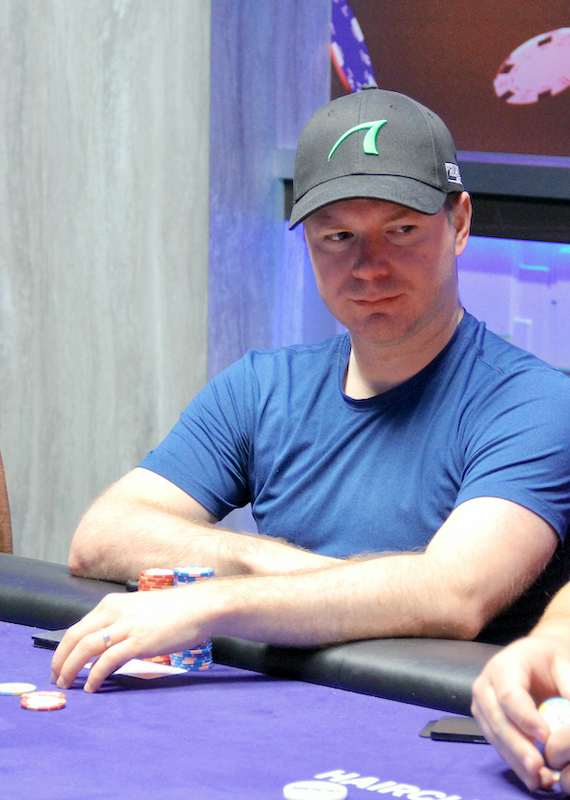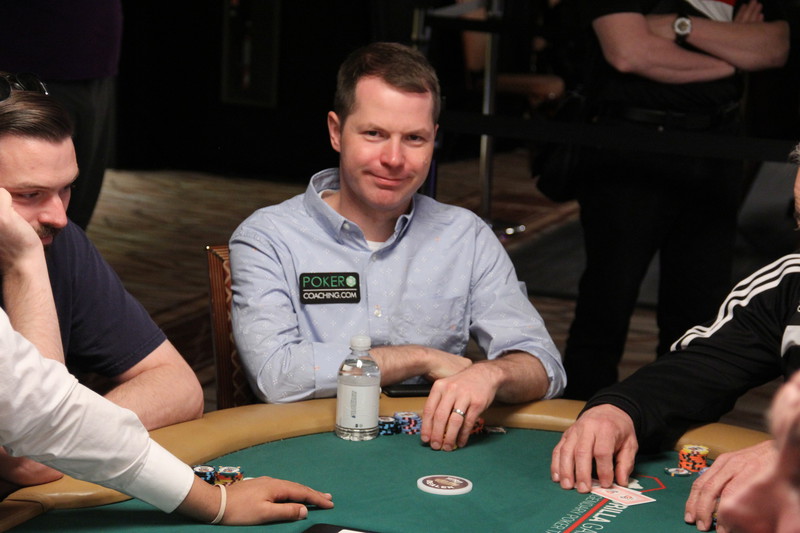






Jonathan Little Discusses How Poker Strategy Has Changed Over The Last Few Yearsby Craig Tapscott | Published: Apr 06, 2022 |
|
|

These days the 37-year-old still plays high-stakes events, but he has to do so while also running his Poker Coaching empire, a training site featuring some of the best players in the game sharing their knowledge to help students take their game to the next level.
Little is also a prolific author with 15 best-selling strategy books, including Mastering Small Stakes No-Limit Hold’em, Excelling At Tough No-Limit Hold’em Games, Secrets Of Professional Tournament Poker, and Peak Poker Performance. (And, of course, he is also one of our favorite Card Player columnists.)
You can also find Little’s content on his YouTube page, his Poker Coaching podcast, or on Twitter @JonathanLittle.
Craig Tapscott: Let’s talk about c-bets. Years ago, a standard tournament strategy approach was to make a continuation bet almost 100% of the time. What has changed? When should you c-bet and when do you recommend putting on the brakes?
Jonathan Little: If your opponents fold too often to continuation bets, or do not raise continuation bets often enough, it is tough to go wrong by continuation betting with 100% of your range.
Over the last few years though, many players have worked hard to improve their skills, forcing you to move away from the exploitative 100% continuation betting strategy and closer to the game theory optimal strategy, which involves betting more often when you have a range and nut advantage, and checking more often when you do not.

Some boards line up way better for the preflop caller’s range than the preflop raiser’s range. For example, if you raise from under-the-gun and the big blind calls, on boards like 8-7-5, the big blind will have lots of nut hands and pairs whereas the UTG player will not. This will force the UTG player to check behind on the flop way more often than they would on a board like A-K-J, which connects more with the preflop raiser.
Also, when you are out of position as the preflop raiser in single raised pots, you should check a large amount of the time, especially on low-and-middle card boards.
Craig Tapscott: In the past few years I’ve seen players more aggressively defend their big blind with a wide variety of hands. How much did solvers come into play in regard to this strategic approach? And what do you recommend as a very experienced pro watching the evolution of this approach to big blind play?
Jonathan Little: Your big blind defense range depends on the initial raiser’s range, the size of the pot, and the effective stack depth.

For example, if you are 100 big blinds deep in the big blind against a button raise in a cash game, you should defend with 40 percent of your hands. But in a tournament, you should defend with 84 percent of your hands. Many players do the opposite though, failing to realize the importance of their better pot odds in tournaments.
As stacks get shallower, you should typically defend with a wider range because you will realize your equity way better compared to when deep stacked.
For example, someone raises and you defend with 9-2 suited playing 20 big blinds deep. If you flop top pair, you can be happy enough playing it for all your money. But if you are 150 big blinds deep, you will likely have to fold it to a big flop, turn, and river bet, forcing you off your equity.
That being said, in general, I would recommend you defend your big blind a little tighter than the game theory optimal strategy dictates. Mainly because you will not play anywhere near perfectly post-flop, especially from out of position.
Tightening up a little (not a lot) will help you sidestep many of the really tricky spots and also strengthen your range a little, making it easier to play. The hands that I typically do not defend with that the GTO strategy defends are the junky big card, little card hands, like Q-2 offsuit or J-4 offsuit.
Craig Tapscott: Let’s take a step back and talk about small blind play. How do you approach that position in comparison to what you did ten years ago when you were the World Poker Tour Player of the Year? What have you learned from watching some of the greats?
Jonathan Little: For the most part I (and almost everyone else) played too tightly from both the small blind and big blind. I also three-bet a little too polarized (with my best hands and junky hands that are not good enough to call) from the blinds, whereas the GTO strategy uses a more linear strategy (with my best hands and decently strong hands).
 As players have learned to call three-bets more from in position, you are required to have a range of hands that play well, not a range of junky hands containing a blocker to their continuing range, like K-5 offsuit.
As players have learned to call three-bets more from in position, you are required to have a range of hands that play well, not a range of junky hands containing a blocker to their continuing range, like K-5 offsuit.
Many of the best players in the world play close to a GTO strategy when they are playing against other strong opponents, perhaps erring a bit on the side of aggression because they realize most players will over-fold a little bit on all betting rounds.
Some players like Michael Addamo take this to the extreme, whereas I think players like Justin Bonomo are a little more controlled. That said, they are all aggressive and they will put you in difficult spots, which is what you should strive to do to your opponents as well. ♠
Join more than 120,000 players worldwide who have taken their game to the next level. To develop your poker skills and learn how to crush games, check out PokerCoaching.com.
Features
Tournaments
Strategy
Commentary & Analysis